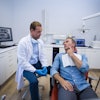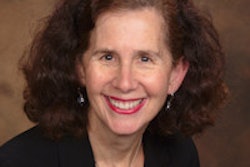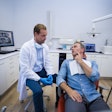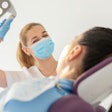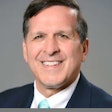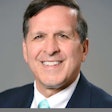
"Do you mind if I see who that is?" Have you heard this before? Shall I say: Have you heard this within the past 24 hours?
This past week, we have been serenaded multiple times with various ring tones, including those that my dental assistant and I use on a regular basis. Our first thought is "My phone is on silent, why is it ringing?" Then, we realize it is one of our patients who can't live without connections for more than an hour.
 Sheri B. Doniger, DDS.
Sheri B. Doniger, DDS.These interruptions are not necessarily limited to cellphone calls or text messages, but often include incoming email. Between the buzzing and the dinging (I'm being polite -- some alerts are much more alerting), the interruptions are now the norm. Patients don't seem to care what they are disrupting, be it a preventive appointment or a restorative. It is almost comical.
This phenomenon is not limited to one demographic or another. You would think that the teens and 20-somethings would be more tied to their phones and have an incoming "urgent" text message. We are seeing that patients of all ages, from the teens through those in their mature years, have multiple appointment interruptions due to their cellular technology.
We all appreciate the random patient who asks if it is OK to keep her or his phone on because they are expecting an emergency phone call. They at least respect the dental procedure process. But the interruptions are at best annoying and at worst startling. When you are focused on the procedure, the patient's reaction, and any random movements, the added surprise of a loud cellphone tone could be an unnecessary distraction.
Nevertheless, what to do? Some offices have signs indicating cellular technology affects dental equipment. I have seen no cellphone zones and signs with the cellphone crossed out. Do these pictograms work? Gentle reminders don't seem to be effective for most of these patients. After the first appeal to turn off the cellphone, some do not even follow the request. I do find it funny when the continuous bings of incoming mail sound. Patients are impatient enough to leave our chair. They must be more eager when they know they are being bombarded with incoming requests. Silencing the phone doesn't always work since the phone is on vibrate. The notifications are still pouring in.
“I wonder what patients would think if we kept answering our phones during their treatment?”
Something almost more comical is when I receive a phone call on my cell during my patient day. Since everyone is on their cellular device constantly, they expect others will have the same connectivity. Patients leave texts asking for appointments or needing to ask a question. They know I am in the office, but it is easier to text and not deal with "real people."
I have a patient who never calls the office. She sends texts about scheduling appointments for her sons and herself. We rarely are able to speak with her in real-time. When she comes into the office, she jokes about not calling back. There are times she is not able to be accommodated because of time lapses between text messages. I don't know what patients think, leaving texts on my mobile number, since I never carry my cellphone chairside.
Honestly, I would never consider having my phone near me while treating patients. Infection-control issues aside, it would be disruptive and not very professional. If anyone truly needs to reach me while I am at the office, we recommend she or he call the office number first. Although, I wonder what patients would think if we kept answering our phones during their treatment? Would they think it was disruptive as well?
The ongoing ringing of the cellphone serenade still chimes on. We are going to try more signage. On the other hand, maybe baskets to collect the ringing phone, placed at the front desk, as teachers have in their school classroom. Regardless, the melodic interruptions may still continue until everyone has wearable technology and cellphones become obsolete. Until then, a little country music would be nice to hear.
Sheri B. Doniger, DDS, practices clinical dentistry in Lincolnwood, IL. She is currently vice president and president-elect of the American Association of Women Dentists and editor of the American Association of Women Dentists "Chronicle" newsletter. She has served as an educator in several dental and dental hygiene programs, has been a consultant for a major dental benefits company, and has written for several dental publications. You can reach her at [email protected].
The comments and observations expressed herein do not necessarily reflect the opinions of DrBicuspid.com, nor should they be construed as an endorsement or admonishment of any particular idea, vendor, or organization.

